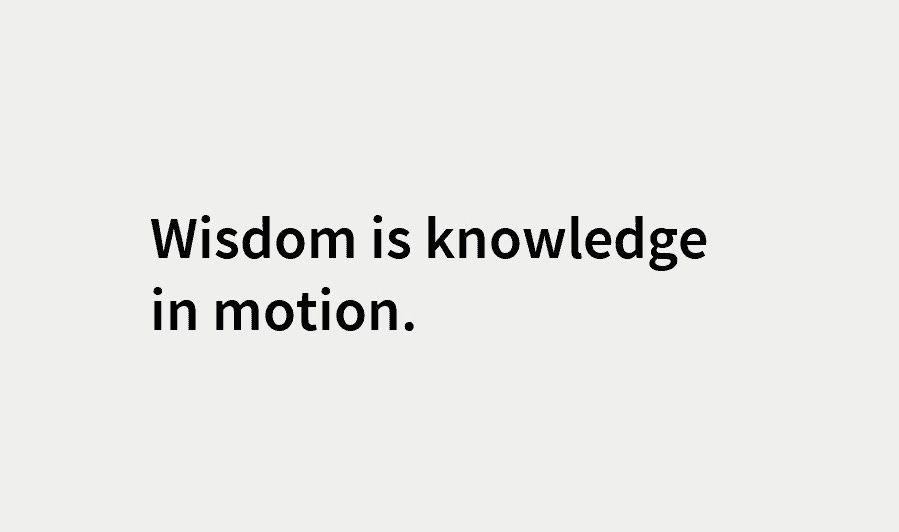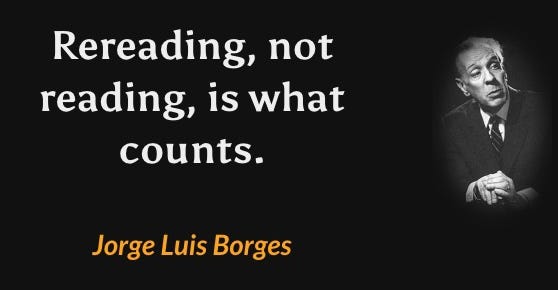Knowledge in Motion - Best of the Month (7)
April 2023
… it’s the “aha moment!” when we re-read what transforms.
The goal with this digest is to provide you with some quotes from the posts published during the month along with practical prompts and questions to use in 1:1 meetings, coaching sessions, and to inspire themes for larger team meetings.
SMART or FAST
Goal setting is the process of defining specific outcomes to be achieved within a specific time frame. Below some of the reasons why it is important to set goals: Thanks for reading Leadership Reflections! Subscribe for free to receive new posts and support my work.
“Goals are a powerful tool to drive strategy execution. To harness their potential, leaders must move beyond the conventional wisdom of SMART goals and their entrenched practices. Instead, they need to think in terms of being FAST, by having frequent discussions about goals, setting ambitious targets, translating them into specific metrics and milestones, and making them public for everyone to see.”
For strategic goals the FAST framework seems to provide us with a better way of thinking about long term trajectory, higher ambition and transparency that helps with generating momentum to drive execution across members of a team or even teams within an enterprise.
However for more action oriented short term objectives, the SMART framework can help better define the specifics of what needs to get done in order to measure tangible progress.
Probably a combination of both frameworks can provide us with a less rigid and more sophisticated approach to goal-setting, better balancing between long term trajectory and short term deliverables, between strong team work and individual performance.
Questions and prompts to use with your team:
Why Goal Setting Matters? How do you perceive the significance of goal setting within our context?
How might we leverage the strengths of both frameworks for a more agile and balanced approach to goal setting?
By engaging in continuous conversations, we cultivate accountability, promote innovation, and enhance collective ownership. Can you share instances where regular discussions have propelled your teams toward achieving their objectives?
The ambitious edge is the true catalyst for innovation because ambitious goals stretch our boundaries, inspiring creativity and fostering a mindset prone to exploring uncharted territories. In your experience, how has pursuing ambitious targets elevated our teams' ability to innovate and reimagine possibilities?
How can embracing transparency in goal setting stimulate healthy competition, alignment, and overall performance improvement?
The Byzantine's Generals Problem
“It is not sufficient that everyone knows X. We also need everyone to know that everyone knows X, and that everyone knows everyone knows that everyone knows X” James A Donald (anonymous Canadian cryptographer)Thanks for reading Leadership Reflections! Subscribe for free to receive new posts and support my work.
The Byzantine's Generals problem is a thought experiment that deals with the challenge of coordinating actions between parties that may not trust each other; and this is solved by blockchain technology.
The Byzantine Generals Problem can also be seen as a game theory problem, which describes the difficulty decentralized parties have in arriving at consensus without relying on a trusted central party.
In the Bitcoin white paper released to the world in October 31st 2008, the author (or group of authors) under the pseudonym of Satoshi Nakamoto solves the Byzantine’s General Problem by introducing to the world blockchain technology.
We can view the Byzantine's Generals problem as a way to understand the difficulties of leadership and decision-making in complex organizations.
Leadership and Blockchain share the common challenge of establishing the (decentralized) trust required to execute on common goals effectively across small teams or large enterprises.
Questions and prompts to use with your team:
How do you see the challenge of coordinating actions between stakeholders with different motivations in the context of the Byzantine's Generals Problem relating to the complexities of decision-making within our organization?
The concept of trust seems central in both the Generals' challenge and effective leadership. How can we establish and maintain trust among team members and departments, especially when facing uncertainties and competing interests?
Looking at the blockchain's solution to the Generals' problem, what lessons can we draw about the importance of transparency and accountability in our decision-making processes? How can we ensure that our leadership practices uphold these values?
The decentralized nature of blockchain technology addresses the issue of trust without relying on a central authority, so how can we decentralize decision-making within our organization to empower different teams while ensuring alignment with our overarching goals? are we an empowering leadership team?
In the analogy, effective communication plays a crucial role in solving the Generals' problem. How can we enhance communication at all levels of our organization to ensure that everyone is not only aligned with our strategies but also aware that this alignment exists among their peers?
The Schrödinger's cat
"I learned very early the difference between knowing the name of something and knowing something." Richard Feynman, Physics Nobel Laureate 1965Thanks for reading Leadership Reflections! Subscribe for free to receive new posts and support my work. The Schrödinger's cat is a paradox, a thought experiment to help illustrate the difficulty in understanding qu…
"I learned very early the difference between knowing the name of something and knowing something." Richard Feynman, Physics Nobel Laureate 1965
The Schrödinger's cat is a paradox, a thought experiment to help illustrate the difficulty in understanding quantum mechanics. However, it can also offer insights for leadership to navigate uncertainty and ambiguity
“Quantum Leadership”
Assume nothing (avoid thinking “been there, done that”)
Suspend judgement (requires the practice of self-awareness and the development of strong emotional intelligence)
Work the problem (don’t think of solutions ahead of time, reframe the problem statement as many times as you can be hands on!!!)
In the inevitable battle between time to think vs. amount of information needed to make a decision… never trade off clarity of thinking.
The paradox to leadership that the Schrödinger's Cat presents is that in order to embrace uncertainty and thrive in an increasingly complex world, one needs to know deeply yet live in a constant state of observation and questioning; because two same perceived realities can be different from each other at any given time.
Questions and prompts to use with your team:
How do you see the parallels between Schrödinger's cat existing in multiple states simultaneously and leadership in uncertain and ambiguous situations? Can you draw insights from this analogy for making decisions when outcomes are uncertain?
Schrödinger's cat is both alive and dead until observed. In the same vein, how might the idea of quantum leadership involve embracing multiple possibilities and outcomes until a clearer picture emerges? How can we apply this approach to handling complex challenges in our organization? Are we “grey” enough when needed or always black-and-white in our thinking jumping to decisions too fast?
Quantum entanglement suggests that particles can affect each other's state, regardless of distance. How can this principle guide us in fostering interconnectedness and collaboration among different departments or teams, even when working remotely or across geographical locations?
Uncertainty and ambiguity often lead to fear and resistance in teams. How can we adopt a quantum leadership mindset to help team members thrive in such conditions, embracing the uncertainty and focusing on innovative solutions rather than succumbing to anxiety?
Just as observing a quantum system can influence its behavior, how can we actively shape outcomes by our presence and engagement, especially when navigating uncharted territories? What strategies can we employ to positively influence our team's direction amid ambiguity?







